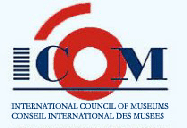 |
|
|||
|
REISERAPPORT
ICFA-meeting in Dublin, October 2005 • Who are we making the exhibitions for? The curators, the art historians, “the common man”, schoolchildren, tourists… • How should we present the permanent exhibitions? Texts, books and pamphlets, lectures, guided tours, audio guides, nothing… • What is to be taken into consideration? The public? Representative – for whom? • And what about making the cultural heritage available? The history of The National Gallery of Norway Based on a governmental resolution the National Gallery was founded in 1837. During the first years, the exhibitions were shown in different locations in the city, among others in a few rooms in the upper floor of the royal palace. The earliest part of the collections reflects the purpose of education and culture. Plaster copies and paintings in the “old master paintings’” tradition were bought. From 1849, a conscious stand about Norwegian art was established through acquisition of Norwegian paintings. In 1882 the collections of the National Gallery was moved to, and permanently shown in the building belonging to The Sculpture Museum of Kristiania, and in 1903 the National Gallery and The Sculpture Museum became one institution. In 1907 the southern wing of the museum’s building was finished. The northern wing was completed in 1923. The National Gallery did not have any director until Jens Thiis entered in 1908. He was director until 1941, and during his years the Gallery went through several big changes, such as the northern wing, several important gifts arrived in the museum, the library developed etc. During Thiis’s regime he made the decisions on how the art should be presented. He also managed several major exhibitions to be shown. In 1988 the Museum of Contemporary art was established on the reasons of the need of more space to show contemporary art. On the first of July 2003 The National Gallery, The National Museum of Architecture, The Museum of Applied Arts in Oslo, and the National Museum of Contemporary Art co organised in a new organisation: The National Museum of Art, Design and Architecture. On the 12th of February this year a new exhibition based on the earlier permanent collection was opened in the first floor of The National Gallery. From the beginning of the museum’s life in this building, the permanent collection was based on a chronological model, and Norwegian art was mostly separated from the foreign art. This model did not require much previous knowledge of the public, and if they wanted to go deeper into the material, it was also possible, as long as most of the artists were represented with several pieces of art. With the new exhibition, two new conceptions were introduced: “themes” and “changing basic exhibitions”. The themes are based on different principles such as motifs (portraits), the time they were made (the modern life), inner significations (vulnerability) or techniques (relief of stone and glass from the 30’ies). As a visitor you have to “tune in” in every room, because of this unpredictability. But it is also edging! One important thing according to this is the texts that follow every room; to get a grip in the curator’s thoughts. In the today’s exhibition in the National Gallery it is shown art up till 2005, which means less space for the old art. What about the “changing basic exhibitions”? The significance was that the whole thing should be changed in a period of 2 years. What does this “changing basic exhibitions” mean? The use of the word “basic exhibition” was also new in our context. It is not yet decided whether one should change the whole thing, or only a few rooms. Is this the answer to temporay collections and permanent exhibitions? Or does it mean that we give up on the predictability in permanent collections? What do the public care about this? What did we know about the importance of the permanent collections in people’s minds? Never ever have so many people in Oslo and Norway had so strong reactions to something in the field of arts. The reaction was connected not only to the new “basic changing exhibition”, but also to the new institution, to the leadership of the new institution, the National Museum’s tasks, the qualifications of the staff and leadership of the museum, the position of Norwegian art, and a lot more. What did we actually know about people’s relationship to our art and art museums? The answer is “hardly anything”, but we do now a lot more now… ▲ til toppen Tilbake til reiserapporter 2005 |
||||